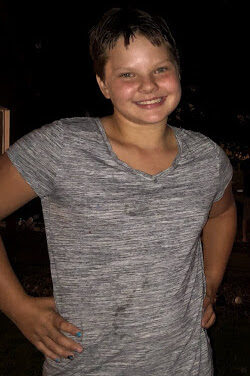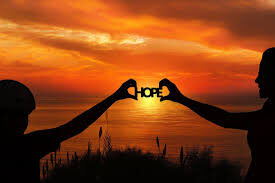I may earn money or products from the companies mentioned in this post.

Hi There!
My daughter Riley is smart, artistic, physical strong, learns things quickly, passionate about anime and doing “cos-play”, a good actor, an aspiring musician, and autistic. All of these things are just pieces of who she is as a person and I think she is pretty darn awesome. She is a strong willed young lady and never fails to amaze me with her strength, her different take on the world, and her determination when she sets her mind to something.
This last year as I prepared to commemorate Autism Awareness Month to show my support for Riley and other awesome people like her, I found myself confronted by a whole new world of information that I honestly didn’t have any idea about which was a bit disconcerting.
I should be one of the “informed”. After all, I’m a special education teacher. I have attended SO many trainings and done dozens of evaluations of autistic kiddos and I am the parent of an autistic young lady for whom I have attended innumerable evaluations and IEP meetings. I have read books and attended conferences but what I stumbled into this year blew my mind.
I am still learning and am dedicated to becoming a better ally and helping Riley learn to advocate for herself as an awesome autistic young lady, but here are some things I learned this year just to get you started on your own journey of inquiry.

1 – I should have been commemorating/celebrating Autism Acceptance Month instead of Autism Awareness. People are aware, but what isn’t happening is acceptance. I see that in my own daughter’s school. She is in a program that is specifically for autistic students and students with emotional disabilities. This school, where they bus her in for this special program, does not teach its students acceptance of their autistic peers. They have taught my daughter to fit in better. Instead of changing the school’s culture to be accepting and learn about what being autistic means they have worked hard to make Riley “fit in”. While I know there is value in her being able to function in society, I think there would be more value in her peers being aware and understanding that differences exist and have benefits. Click here for more on Autism Acceptance Month.
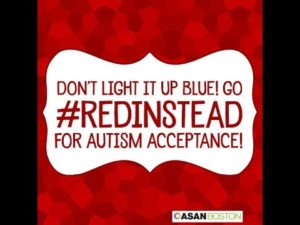
2 – The colors and symbols that I would have used to show my support are not seen as positive by the Autistic community. The color blue that is put forward as the color for Autism is apparently based on stereotypes that Autism is a boy’s condition. This stereotype actually makes it harder for girls, like my daughter to be diagnosed, and harder to get appropriate services as many “experts” and educators don’t really understand the differences in what autism might look like in girls and still think it is a male condition. The autistic community proposes that you wear #RedInstead to show support. This article is one of the first that sent me on this journey and is worth a read as she briefly touches on a lot of these items.
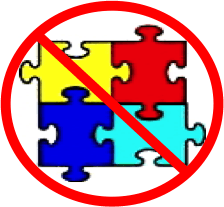
The puzzle piece is equally controversial. The problem with the puzzle piece is that it indicates that autistic people are “mysterious, disconnected, and needing to fit in” which is largely a negative perception. To read more about the changes here, check out this article in Disability Scoop.
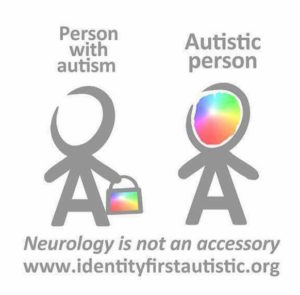
3 – People first language is not appreciated by the Autistic community. People first language would read like this, “My daughter has autism.” This language makes it sound like a disease or a cold. But Autism isn’t a disease, it is a state of neurodiversity that means her brain is wired differently. Identify first language would have me phrase it differently. “My autistic daughter.” There is power in language and in this way of saying things this is a part of who she is, not something separate. For more on this check out this Autistic Self Advocacy article.

4 – The organization Autism Speaks does not apparently speak for many Autistic people. In fact, this organization seems to be highly controversial and not at all representative of people with Autism. For more on this, check out this infographic. The organization apparently does a lot of speaking “for” autistic people but not a lot of listening to them or speaking “with” them. That doesn’t make for good advocacy or understanding and their spending is very interesting as seen in the link above!

5 – Many autistics are not interested in a “cure” and feel that the push for a cure, prenatal testing to eliminate autism, etc., is not at all desirable. This was very interesting and I wondered if all autistic people agreed or if there was a split somewhere on the spectrum? For more on this, check out this article from The Guardian.
As you can see, this April was very eye opening for me and I hope these five ideas get you thinking, too. These topics, and more, have changed my perspective on how I can best be an ally for my daughter and prepare her to be a strong advocate for herself and other autistic folks as she grows up. How can she be a voice for acceptance vs awareness and what can we do as a family to change our current school and community culture that is so focused on teaching autistic kids how to act normal instead of teaching society/schools how to be accepting and tolerant of people who see the world a bit differently. I tried to provide you with lots of links and even images with website information so that you can do some more reading if you are so inclined. I’m going to give you a meme that made me smile because it is something my daughter would 100% say:
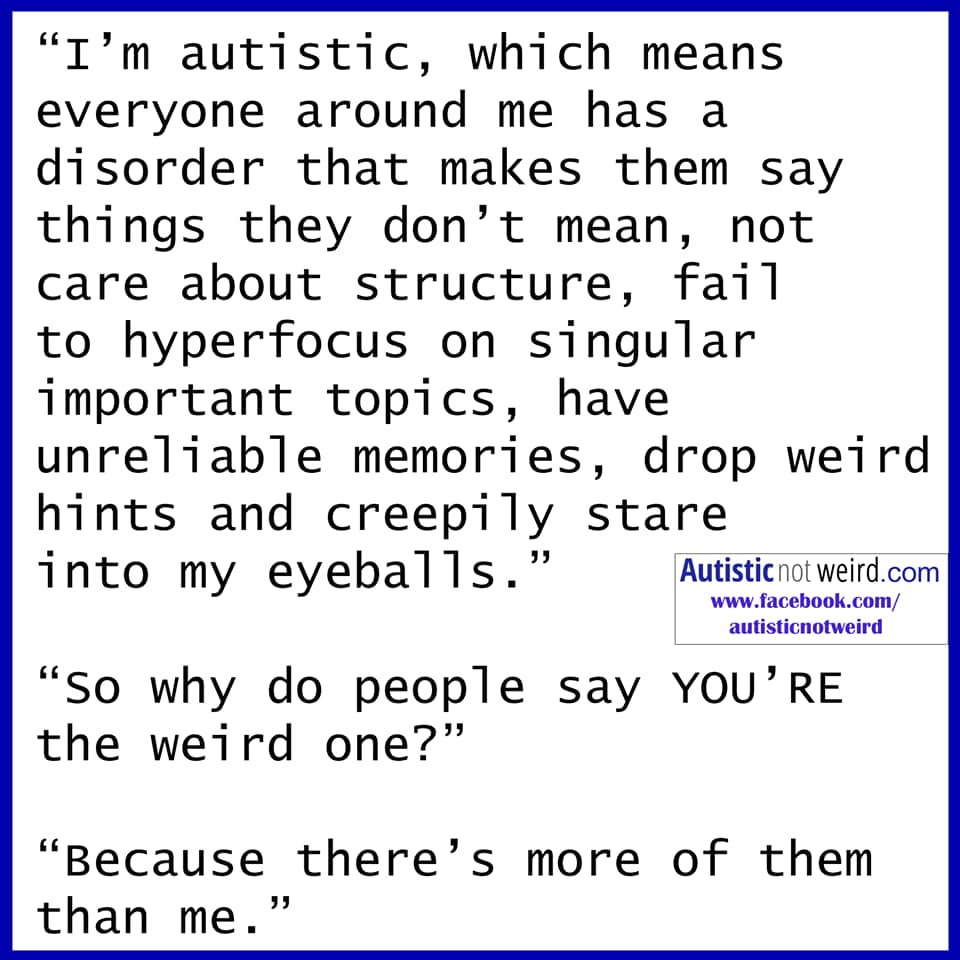
So, like the graphic above says, we will celebrate “Autism Acceptance Month” because “Acceptance is an Action!” So let’s take some action together to change the world.
Love Always, Meg

